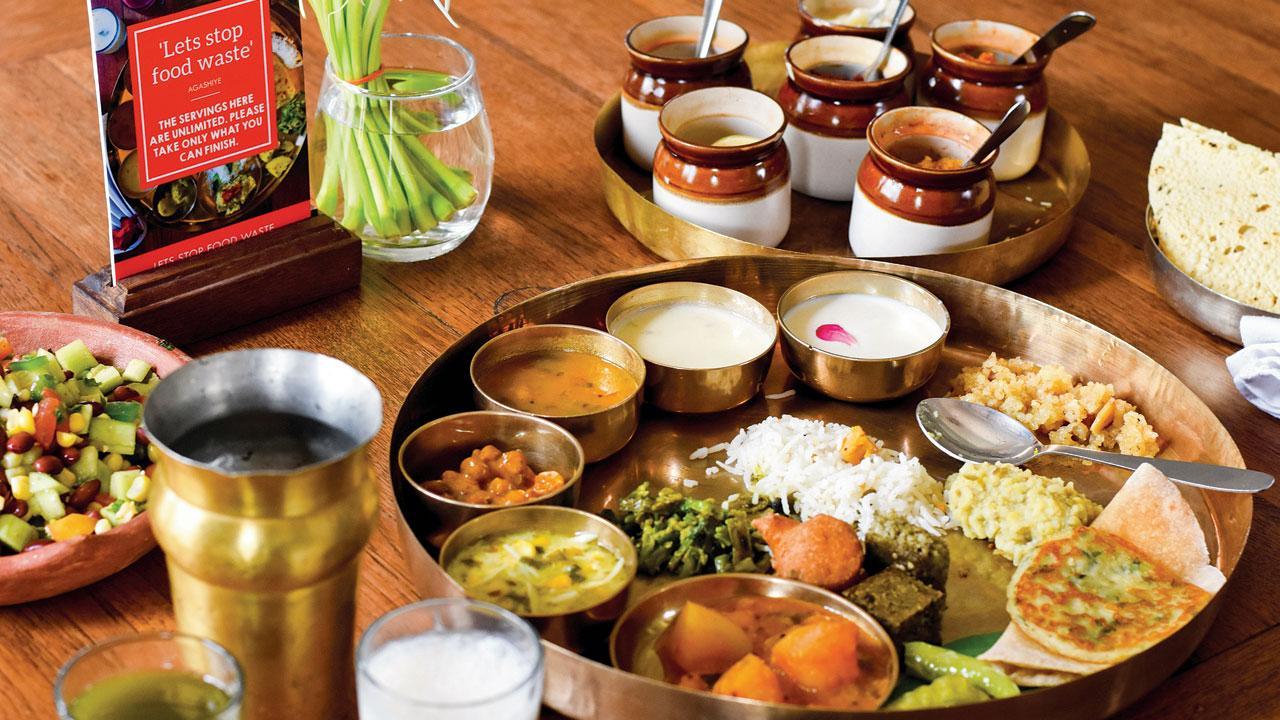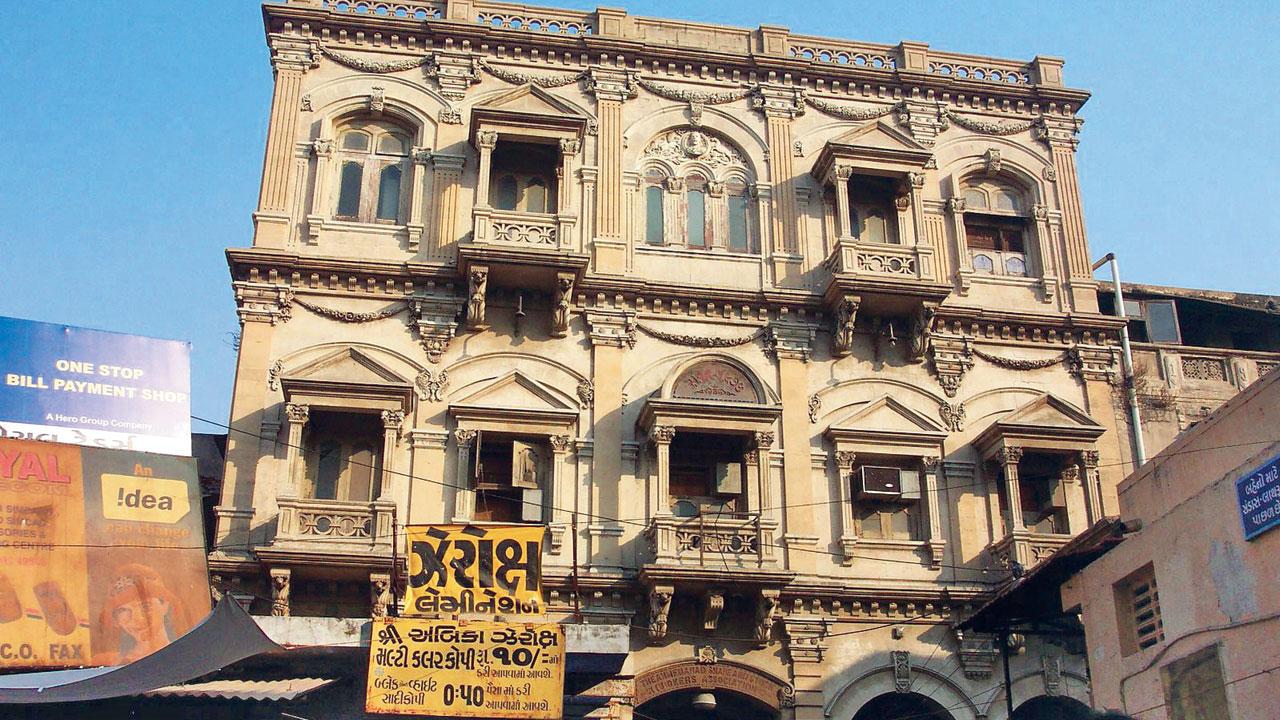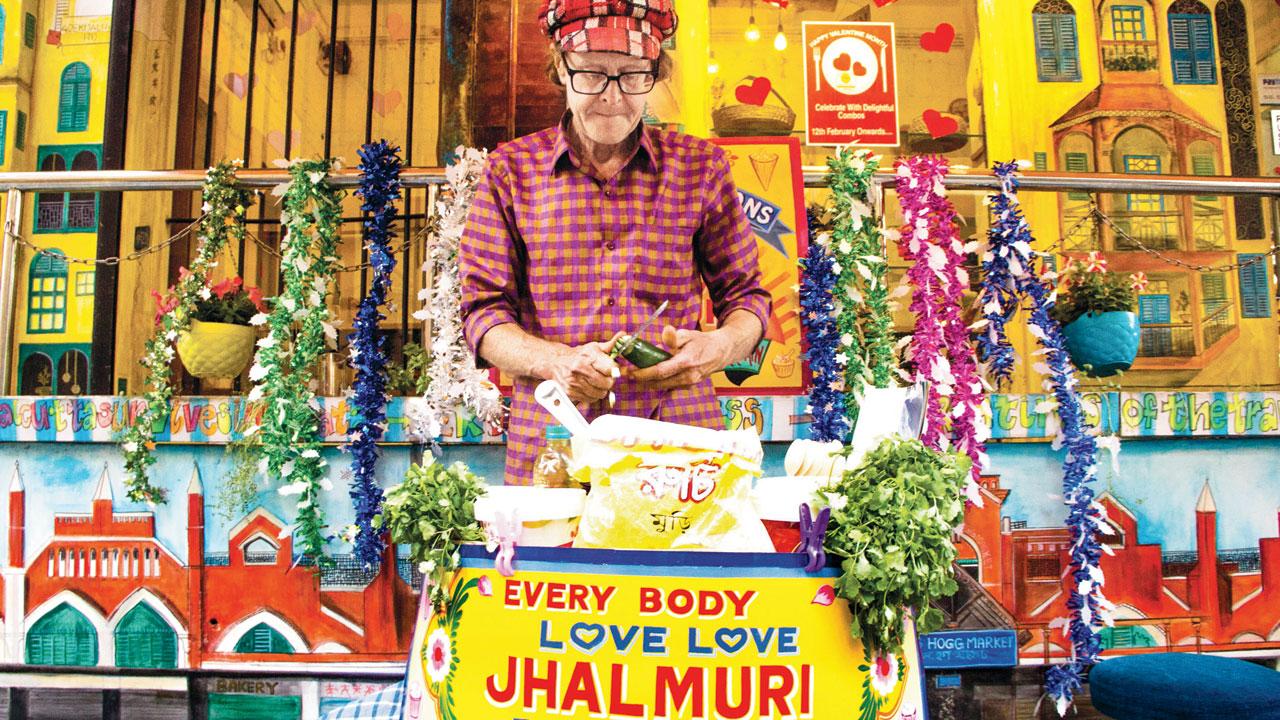In her latest book, food entrepreneur Karen Anand takes you on a culinary journey across five Indian states

Representation pic
In a warm intimate gathering on a winter evening in Delhi, entrepreneur-food consultant-author Karen Anand launched her new book titled Masala Memsahib: Recipes and Stories from My Culinary Adventures in India (Pan Macmillan India; Rs 1,999). Writing about her experiences across Goa, Gujarat, Kerala, Maharashtra, and West Bengal, Anand shares over 100 recipes. Peppered with anecdotes, accompanied by photographs of food styled in a studio, shot at beaches and streets, at roadside food stalls, and homely kitchens, here’s a repertoire that spells local cuisines, diverse eating practices, and fabulous culinary histories. Sunday mid day browses though the pages to bring you a peak.
Gujarat
ADVERTISEMENT
What defines Gujarati cuisine for me is not only the vast array of dishes but the amazing aesthetics which some families bring to the table and the sheer elegance of simple meals, adding touches like flowers, fragrances and textiles. The merchants of Ahmedabad—the Sarabai, Mangaldas and Hutheesing families—have done much to take Gujarati food to another level. They were all originally Jains from Osian in the Marwar district of Rajasthan. The Hutheesings moved to the port city of Khambat in Gujarat to trade with the British (mainly opium, it is thought) under the Mughal governor.

They amassed huge fortunes and through generations diversified into textiles and other businesses. The Sarabais are an Ahmedabad institution. The family is responsible for many industries as well as the famous Calico Museum. I was invited many years ago to Anand Sarabai’s mother’s house for lunch. The house was designed by the French architect Le Corbusier with exposed brick work and fabulous open spaces. What I remember most was the exquisite lunch served on silver thalis, the meticulous service done by local boys in starched white pajamas and shirts, the humility and grace and the scent of jasmine in the air.
Lastly, the Mangaldas family, where the tradition of hospitality has been continued by Abhay Mangaldas, who has transformed the family mansion in the heart of Ahmedabad to a stunning boutique hotel, House of Mangaldas or House of MG. He has now added three more residences in the same inimitable style. I have known Abhay for over twenty-five years and admire his passion and drive.
The property celebrates local craftsmanship and cuisine and embodies responsible tourism, offering Gujarati hospitality with immense style and comfort as their motto states, ‘We have consciously tried to maintain this ethos by building an ecosystem around food, textiles, appealing building structure, décor, paintings and even building a cosmetics brand.’ Mahatma Gandhi was a guest at this property on his return from South Africa in 1915, which even back then was staffed by locals from the neighbouring villages.
Corn in creamy sauce

Ingredients
3 fresh sweet corn cobs, each broken into three
1 tsp salt
1/8 tsp sugar
4 green chillies
4 tbsp fresh coriander leaves, chopped
1-inch piece of ginger
1 cup coconut milk
2 tbsp oil
2 tsp mustard seeds
8 curry leaves
1/2 cup yoghurt, whisked
1/2 cup coriander leaves, chopped (for garnish)
Method
Place the corn into a large saucepan or handi and add enough water to just cover it. Add a teaspoon of salt and a pinch of sugar. Boil till the corn becomes soft—this should take about 5-7 minutes. Remove the boiled corn from the water but don’t throw away the water in which they were boiled. Grind the green chillies, ginger and fresh coriander leaves together with a few spoons of the coconut milk to make a paste. Add this paste to two cups of water that we used to boil the corn and whisk till it reaches a liquid consistency.
Throw the excess water away. Heat the oil in a small pan and add the mustard seeds and curry leaves to it. Add the tempering to the liquid prepared above and simmer on a low heat. Add the remaining coconut milk and whisk in the yoghurt. Season to taste and add the corn cobs. Cover and continue to cook on a low heat for at least five minutes. Serve hot with plain boiled rice and garnish with chopped coriander leaves.
West Bengal
Food in Kolkata has been influenced by many cultures—British, Portuguese, Baghdadi Jewish, Armenian, the Mughals, royal kitchens, neighbours in Tibet and Burma and the newer Marwari business community from Rajasthan. In this chapter, I am simply going to focus on the Bengali food I know and love. Kolkata is a city of fantastic people, whether they are Bengali or not, and gracious hospitality that is a result of leisure time and a past steeped in culture, literature and art. Bengali food is a big part of that, executed with much care to detail, served course wise and is often compared to French sophistication.

The chronology of dishes served is based on ancient beliefs relating to the digestive process. Since lunch is the main meal, they start with a bitter vegetable, then comes a saag or green leafy vegetable, dal and a chhenchki (stir fried vegetable) and bhaja (fritters), a vegetable like a chorchori followed by the fish, first the small ones then the large, and lastly the crab or prawn. Then comes the poultry or game birds, mutton, chutney and, finally, dessert. Leafy and bitter vegetables are never served in the evening. Lucchi (Bengal’s answer to the poori), pullao or white rice is served to accompany the meal.
There are also ingredients particular to this region, which are very special, like the fish ilish or hilsa, a member of the herring family which has numerous small bones. Deboned and smoked, it is superior to even the best smoked salmon. When smothered in a paste of mustard and green chilli and steamed in a banana leaf (paturi), it is indescribably delicious. Kolkata bhetki is a soft-fleshed white fish which can be compared to European sea bass or Australian barramundi. Bhetki is to Kolkata what the pomfret is to Mumbai. Nolen gud, palm jaggery, which is used in sondesh and rosogullas in winter and stored in hard, semi-circle cakes or in syrup form for the rest of the year, is so much better than any average maple syrup.
Fish in a milk sauce

Ingredients
400 gm (4 large pieces) katla maachh or thick slices of any white fish
11/2 tsp turmeric powder
4 tbsp mustard oil
1 tsp paanch phoran
1/2 tsp red chilli powder
Salt to taste
1 cup milk
3-4 green chillies; 2 torn,
2 slit vertically
Method
Wash the fish pieces and pat them dry. Rub half a teaspoon of turmeric powder and a little bit of salt to the fish. In a frying pan or kadhai, heat 2 tablespoons of mustard oil till it almost reaches smoking point and gently slide the fish pieces into the pan to fry them. Fry the fish on each side for less than a minute, till lightly coloured. Take the fish out of the oil and keep aside. If the pan in which you have fried the fish is not full of bits of skin, etc., then use the same one. If the pan is messy, take a new one and add 1 tbsp of mustard oil, heat and add panch phoran and torn green chillies.
Stir on medium heat for a minute till you get a whiff of the spice fragrance. Throw in the remaining turmeric and red chilli powder, fry for a few seconds and add the milk. Heat the milk mixture on a low flame and let it simmer for about 4-5 minutes. Then slide in the fish. Season to taste and let it come to a boil, uncovered. Once it thickens, lower the heat and cover and cook for 5 minutes. Uncover, drizzle the remaining tablespoon of mustard oil and add the slit green chillies. Turn off the heat and serve hot with steamed rice.
 Subscribe today by clicking the link and stay updated with the latest news!" Click here!
Subscribe today by clicking the link and stay updated with the latest news!" Click here!








